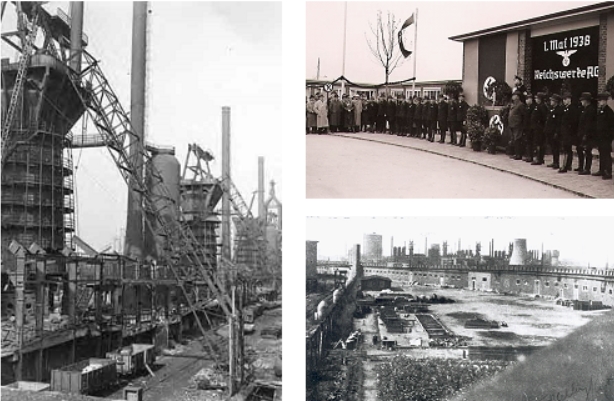The History of the Mittelland Canal
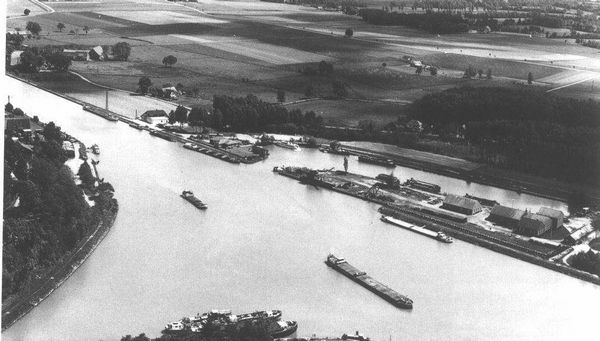
The Mittelland Canal officially starts at the "Nasse Dreieck" at Bergeshövede and, from 2003, links directly with Berlin via the new Elbe Aqueduct (at Magdeburg) and the re-routed Elbe-Havel Canal.
The Mittelland Canal exits the picture at the bottom left corner.
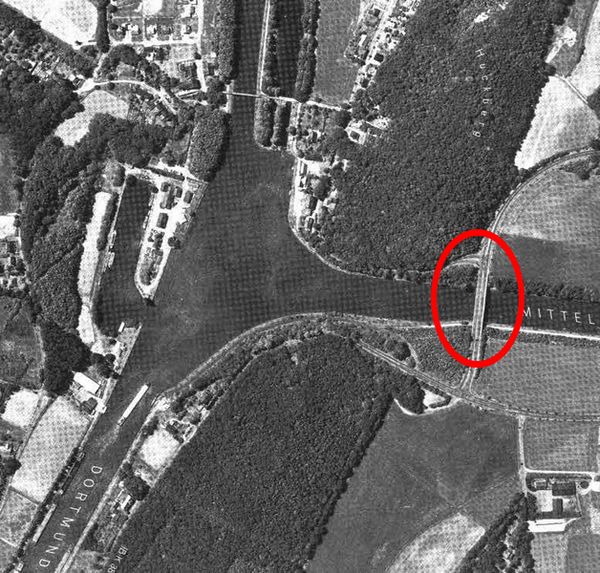
The Mittelland Canal passes underneath the Kaiser-Wilhelm-Brücke (circled) and heads east.
The Dortmund-Ems Canal runs north to south.
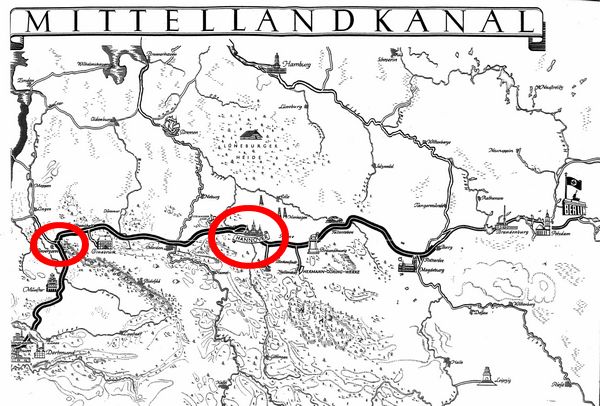
On April 1st 1905, after the usual delays caused by political posturing, the proposal to build the Mittelland Canal as far as Hannover was accepted.
The first section to the River Weser at Minden was completed by the 15th February 1915 and Hannover was reached by the autumn of 1916.
The red circles show the "Nasse Dreieck" and Hannover.
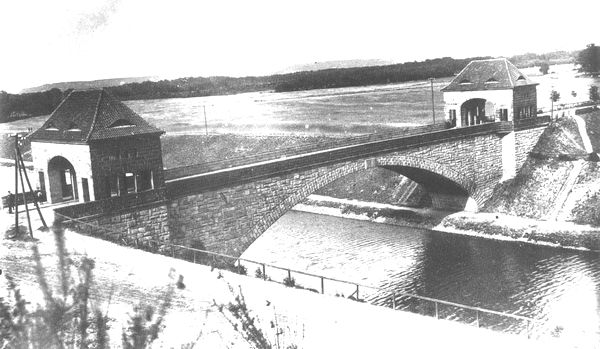
Kaiser Wilhelm II came to the opening of the canal but the occasion was somewhat low key as WW1 was still being fought.
It was thought that the bridge over the Mittelland Canal near the "Nasse Dreieck" (the Wet Junction) would be named by the Kaiser but this was not the case. The several hundred spectators were also disappointed that the wall of water they expected to come rushing through the canal was replaced by a slow trickle which took several days to fill the canal.
After the high cost of its building, the bridge was finally named the "Millionmark Bridge" by the locals.
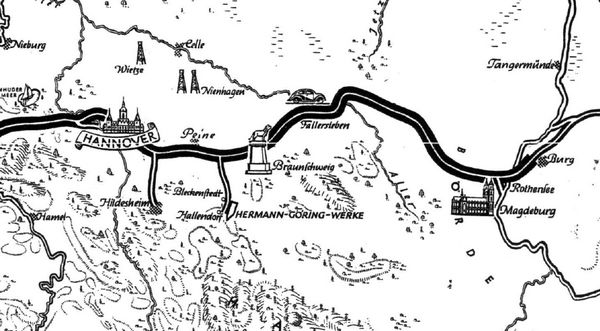
The branch canal to Hildesheim were completed in 1928, Peine was reached in 1929 and Braunschweig (Brunswick) by 1933. The section to Magdeburg was opened in 1938. A branch canal to Hallendorf (Salzgitter) was opened in 1941. The outbreak of WW2 and the communist rule of East Germany saw the final link with the Elbe-Havel Canal remain incomplete.
The requirement of the German war industry for the transportation of huge amounts of raw and finished materials placed great importance on the East-West link and the enormous Hermann Goering Steel Works at Salzgitter was connected to the Mittelland Canal by a special feeder waterway. This huge factory employed up to 800,000 people and annually produced 1.5million tons of raw steel.
The Mauthausen concentration camp was built using the slag from the blast furnaces of the "Hermann Göring“ Reich Works.
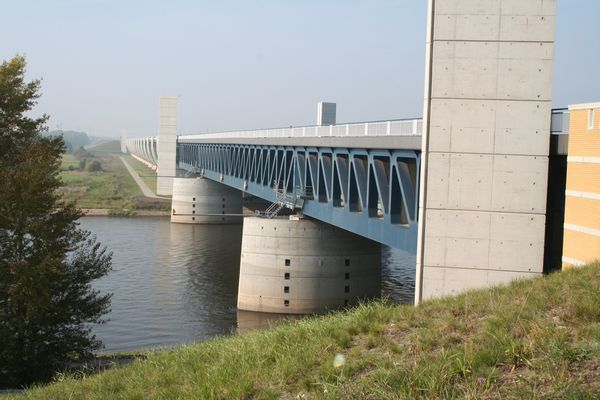

Following German reunification, the final 2km link was opened in October 2003 with the completion of a $470 building project involving a huge aqueduct over the Elbe and the construction of two enormous locks.
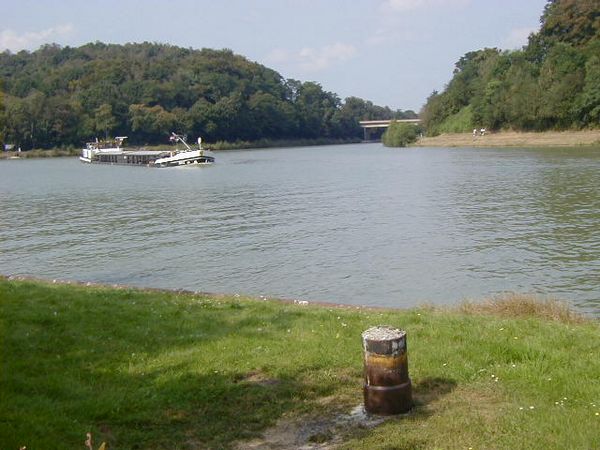
Today, standing at Beverghövede, you can see that the vast majority of traffic travels in the East-West direction and that the huge locks at Bevergern (direction Emden) are little used.
A barge comes from the direction of Berlin using the Mittelland Canal and turns south to use the Dortmund Ems Canal.
